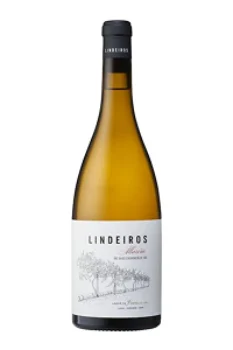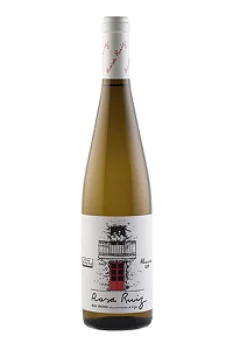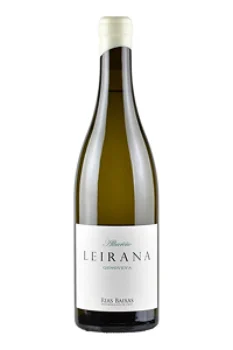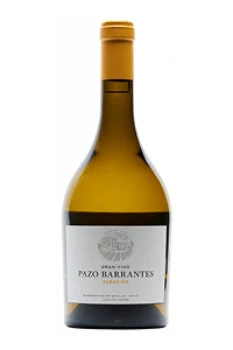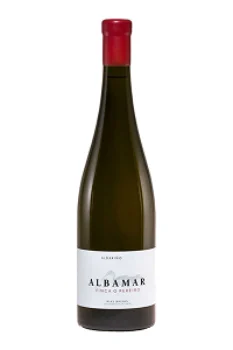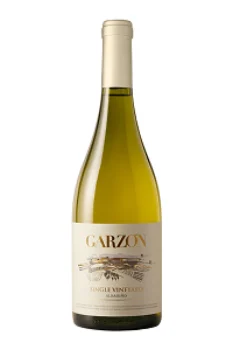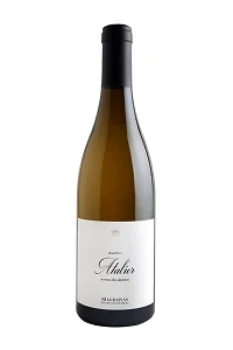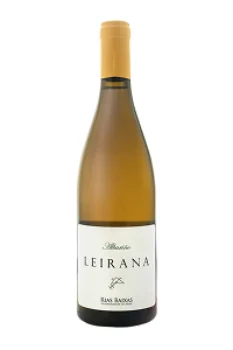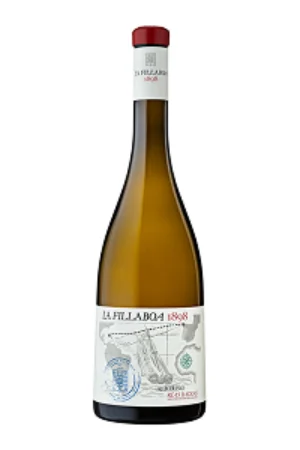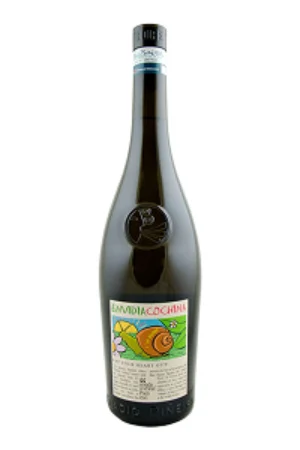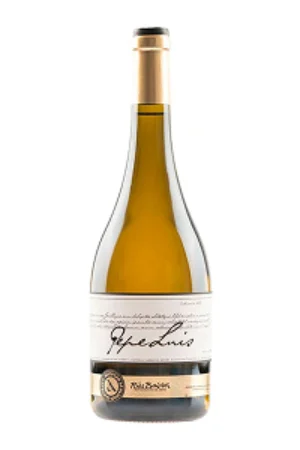From vine to glass: a comprehensive guide to the best Albariño wine in 2025
A crisp, bright, and refreshing wine with citrusy undertones, Albariño white wine is native to the Iberian Peninsula. Wondering what makes this aromatic varietal special? Join us as we explore the best Albariño wine bottles of 2025, from their tasting notes and origins to the ultimate food pairings.
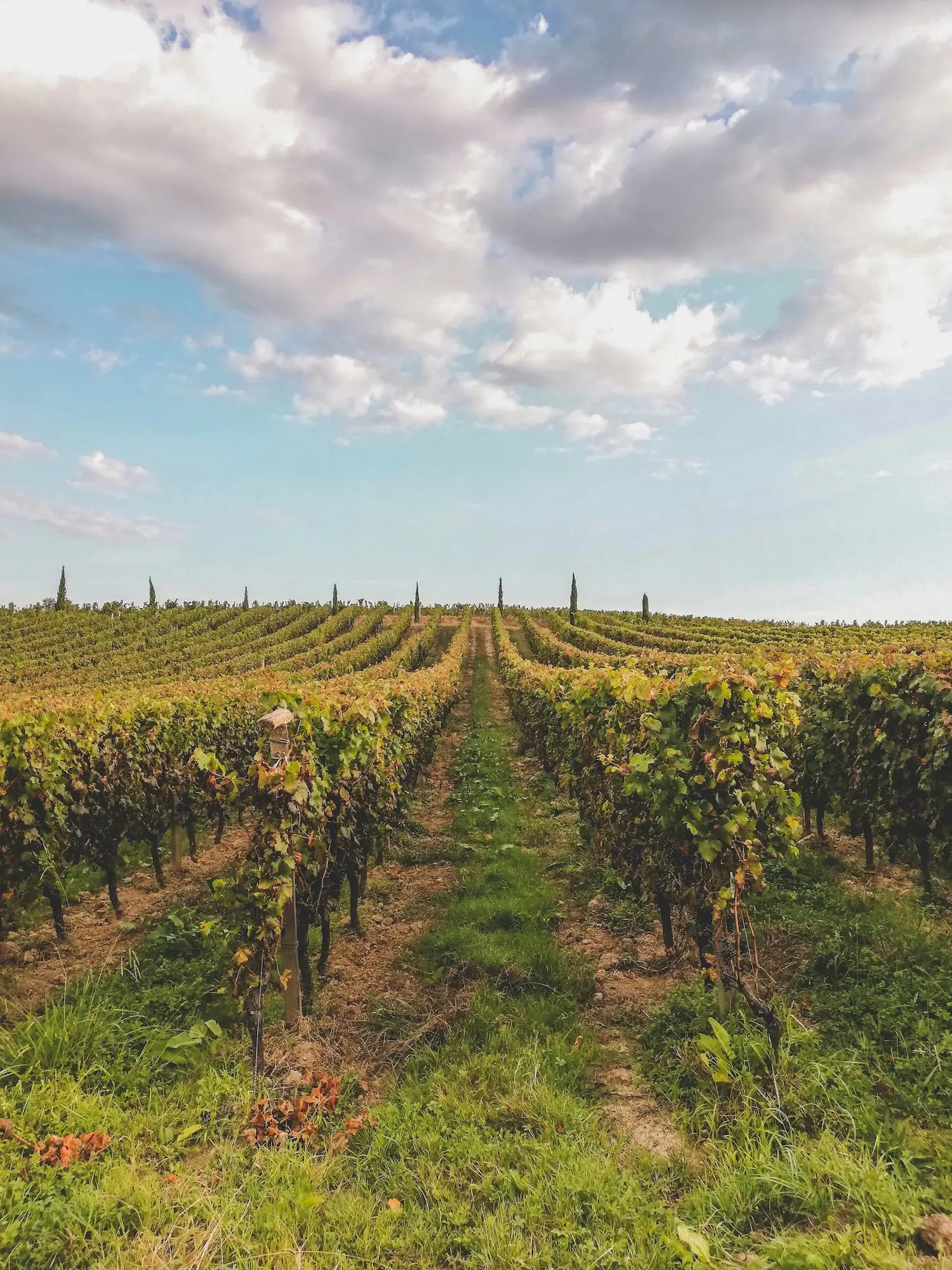
By
Last updated:
The 10 best Albariño wines to savor this summer
Step into the world of Albariño wines by checking out this tastefully curated list of the 10 best Albariño wine recommendations. Whether you’re looking for the right pairing for your next meal or sipping meditatively, these bottles represent vino Albariño at its best.
Albariño wine at a glance
| Attribute | Details |
|---|---|
| Grape Variety | 100% Albariño |
| Origin | Rías Baixas in Spain, now grown in Portugal, California, and Uruguay |
| Serving Temperature | 38–50°F (3 –10°C) |
| Decanting | Typically not recommended, aeration for 15 – 20 minutes can bring out richer flavors |
| Aging Potential | Best enjoyed young (1 – 5 years), but premium bottles can age for 5 – 10+ years |
| Flavor Profile | Lemon zest, grapefruit, honeydew, nectarine, saline |
| Structure | Light-bodied, high acidity, refreshing, crisp taste |
| Alcohol Content | 11.5% to 13.5% |
| Ideal Glass | Tulip-shaped glass |
| Food Pairing | Seafood, light meats, soft cheeses, fresh leafy herbs, salty feta |
| Top Regions | Ribeira do Ulla, Val do Salnés, Soutomaior, Condado do Tea, O Rosal (all in Rías Baixas, Spain); Monção e Melgaço (Vinho Verde, Portugal) |
| Notable Producers | Pazo de Senorans, La Cana, La Val, Pazo de Barrantes |
Produced solely from the Albariño grapes, the key characteristics of the Albariño taste profile are:
- Floral notes: expect floral notes like orange blossom and honeysuckle.
- Minerality and salinity: a distinct salty tang, found especially in those grown near the coastline.
- Fruity undertones: flavors are dominated by citrus, various stone fruits, with hints of lemon zest.
- Zippy acidity: high acidity gives it a clean, and fresh finish.
Albariño wines are light to medium-bodied dry white wines, characterized by a slight bitterness due to the phenols in the grape skins.
What is Albariño wine?
Albariño is a dry white wine known for its vibrant, refreshing and crisp characteristics. In order to understand Albariño, it is important to learn about its production process, from the delicate growing stage to fermentation and bottling. The wine styles can range from fresh, vibrant, and fruity unoaked expressions to more complex variations resulting from lees or oak aging.
Here’s a brief overview of the Albariño winemaking process:
- Grapes: the thick skinned Albariño grapes make up a large portion of the wines, usually 100%. As the berries grow, their vines are supported by Pergolas overhead to keep them free of rot and mildew.
- Harvesting: the grapes are carefully hand-picked to preserve their freshness and acidity.
- Fermentation: often fermented in stainless steel tanks at controlled temperatures to lock in freshness and fruitiness.
- Aging: Albariño wines are typically intended to be enjoyed young and fresh due to their bright acidity, but some Albariños taste better as they age. Oak aging techniques can be employed for added complexity and depth.
Fun Fact: August 1st is Albariño Day on the Wine Day Calendar!
How is Albariño wine made?
Albariño wine production makes use of both traditional and modern winemaking techniques to preserve the grape’s vibrant acidity. Here is a breakdown of the typical Albariño wine production methods.
Método tradicional: making Albariño wines the traditional way
Traditionally, there are several winemaking techniques used to produce varying styles of Albariño wines. They include:
- Ancestral method: the oldest method used to create the sparkling Pétillant Naturel Albariño. Here, the wines are bottled before fermentation is complete, with natural yeasts and carbon dioxide trapped inside. The wine continues to ferment inside the bottle, leading to the formation of bubbles. The remaining yeast settles after a while, making the wine hazy in appearance.
- Traditional method: to create sparkling wines, called Albariño Espumoso, the still wine is bottled after primary fermentation with a mixture of yeast and sugar. The yeast engulfs the sugar to produce carbon dioxide, resulting in bubble formation. The wine is then left to age on the spent yeast cells (lees). After an optimal aging period, the bottles are tilted upside down to collect and expel the sediment.
Modern Albariño winemaking techniques
Modern methods of producing Albariño explore different techniques that enhance the aromatic intensity and structure of the wine. Some of the new methods include:
- Extended maceration and skin contact: to enhance aging potential by extracting more phenols from the grape skin and
- Oak-barrel fermentation: adds depth and complexity as the wines age.
- Wild yeast fermentation: increases the aromatic intensity and wine structure.
The Albariño grape and types of Albariño wine
The Albariño grape is tiny, thick-skinned, pale green in color, and typically grown in cool climates. In Spain, it is used to make light-bodied, elegant white wines, while the Portuguese Alvarinho is part of a blend for producing the peachy white wine, Vinho Verde.
Some of the unique traits of the Albariño grape include:
- Intense aromas: packed full of flavors of citrus, stone fruits, green apple, and floral hints.
- Salinity and minerality: a reflection of its coastline origins.
- High acidity: gives it a zesty, refreshing edge and crisp profile.
Regional variations and differences in wine production techniques may create a spectrum of styles, but the intense aromas remain constant. Depending on the method of production, the types of Albariño wine are:
- Still Albariño: fermentation is completed in stainless steel tanks before bottling.
- Albariño Espumoso: general term for sparkling Albariño wines bottled before the fermentation process is completed.
- Albariño Pétillant Naturel: a subtype of Albariño Espumoso where the wine is bottled during initial fermentation and the sediment is not expelled.
Top selected Spanish Albariño and Portuguese Alvarinho wines
We have collated a few of the high-quality expressions of Spanish Albariño vs Portuguese Alvarinho wines available in 2025. These bottles have impressed us with their outstanding structure and balanced tasting notes. Check out the table below for vintage details, tasting notes, and expert ratings.
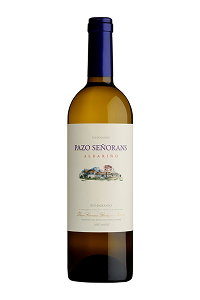
Year: 2022
Tasting notes: Mineral, aromas of honey, vanilla, and pear.
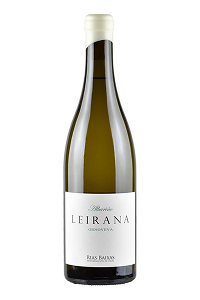
Year: 2021
Tasting notes: Complex and mineral, with notes of hay, straw, and cereals.
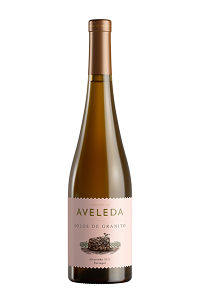
Year: 2022
Tasting notes: Mineral and creamy, with a chalky nose and tropical fruit flavors.
Spanish Albariño vs Portuguese Alvarinho
Two sides of the same coin, Albariño and Alvarinho refer to the same grape variety. The different names are due to the language differences in the countries of origin. Do the wines taste the same?
- Albariño is predominantly grown in Spain in the cool vineyards of Galicia. The grape is bottled as a single varieta, and most are labeled from Rías Baixas. The Albariño is intensely aromatic, citrusy, and brightly acidic.
- Alvarinho, from Portugal’s Minho region, is typically bottled as a Vinho Verde blend with other rare varieties. The wine has more tropical fruit notes, with some spritz and lower alcohol levels from 8.5% to 11.5%.
Understanding how Albariño wine brands price their wine
Albariño wine brands consider several factors before setting the prices for their bottles. These include:
- Region: reputable wines from Rías Baxias and top producers in Portugal typically cost more.
- Winemaking technique: lees aging or oak barrel fermentation adds depth and complexity to the Albariño, but also increases its price point.
- Vintage: exceptional years yield unique wines that tend to be more expensive due to higher demand.
- Brand reputation: big names and established producers like Pazo Señorans are known for their higher quality wines with premium pricing.
-
1. Cadre Sea Queen Albariño 2023 ABV - 13.5%
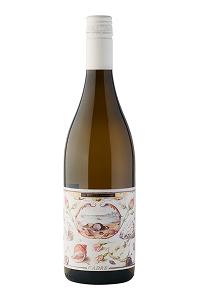
Entry-level Albariño
Vibrant, highly acidic, mineral wine with notes of candied orange and ripe mandarin.
-
2. Granbazan Etiqueta Ambar Albariño 2023 ABV 12.5%
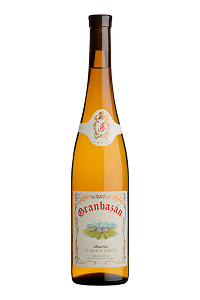
Mid-Tier Albariño
Vibrantly acidic with fresh fruit aromas and a creamy texture.
-
3. Pazo de Barrantes Gran Vino Albariño 2022
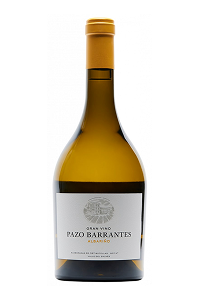
Single-Vineyard
Balsamic background and a lingering finish, with notes of bergamot and verbena.
-
4. Do Ferreiro Cepas Vellas Albariño 2023
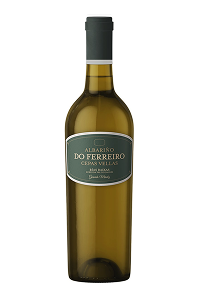
Prestige / Collector Bottles
Smoky, with hints of peach and strong acidity.
Top 3 collection-worthy Albariño bottles
Young Albariños remain popular among white wine lovers, with their fresh aromas and vibrant acidity but there are exceptions. Sampling Albariños of varying vintages has shown us that the wines vinified to age become more interesting. These outstanding wines boast of a piercing acidity, with a certain dryness and complex notes that develop as time passes.
Our top 3 collection-worthy Albariño wine picks are:
Exploring the best Albariño wine years: a vintage walkthrough
Albariño is typically bottled young, however, this does not negate the importance of vintage years. The weather conditions will influence the ripeness, acidity, and aroma intensity of the wine, directly impacting its taste.
Understanding vintages helps you to select the best Albariño wine bottle, whether you seek a fruitier style or a mineral-driven vintage.
Here is an overview of some of the top rated Albariño wine vintages, along with recommended bottles.
| Vintage | Best Albariño | Vintage Characteristics |
|---|---|---|
| 2021 | Bodegas Ethereo Albariño 2021 | Cool temperatures led to delayed ripening and staggered harvests in September. Wines have excellent structure, vibrant acidity, and lower alcohol. |
| 2022 | La Val Finca de Arantei Albariño 2022 | A warm and dry summer resulted in healthy grapes and high yields. Slightly higher alcohol in the grapes was offset by bright acidity. |
| 2023 | Lagar de Fornelos Lagar de Cervera Albariño 2023 | A warm and dry spring led to a generous crop of well-defined whites with good aromatic intensity. |
| 2024 | Morgan Albariño 2024 | Fresh and vibrant wines with persistent aromas and slightly higher acidity than in previous years. |
Albariño for beginners: 3 smart tips to get started
With the right approach, you can enjoy a glass of Albariño like a seasoned sommelier right from the start. Here are 3 quick tips to help you get the most out of your first sip:
- Choose a young bottle: seek out Albariños that are less than 3 years old. This is when they’re bursting with aromas and bright acidity.
- Pair it like a pro: Albariño goes best with light dishes like seafood, light meats, soft cheeses, and even vegetables!
- Aim for 45 – 50°F: serving your Albariño slightly chilled heightens its acidity and intense flavors.
Below, you will find two of our favorite bottle recommendations to get you started on this journey:
| Albariño Style | Our Recommendation | Best to Pair with |
|---|---|---|
| Young Albariño (1 -3 yrs) | Soalheiro Granit Alvarinho 2023 | Seafood, salty feta, fresh herbs |
| Mature Albariño (4 yrs+) | Chan de Rosas Cuvee Especial Albariño 2021 | Aged cheese, ceviche, cured ham |
The perfect wine glasses to enhance Albariño’s tasting notes
Ideal Albariño wine glasses are small with narrow openings, perfect for keeping the wine cool and concentrating its flavors. Check out our quick guide below for wine glass recommendations to take your Albariño tasting notes to the next level.
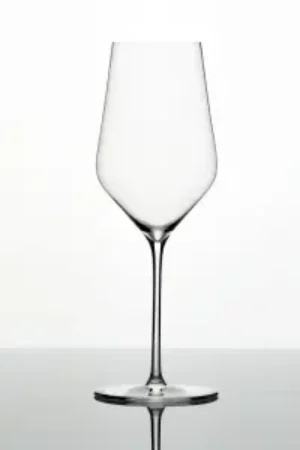
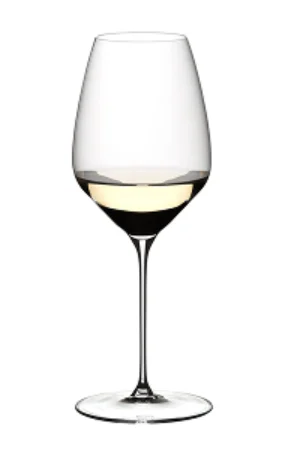
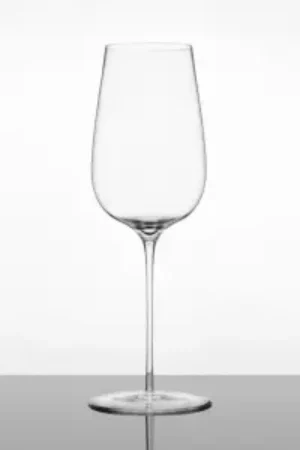
Albariño wine region map: where does it grow?
Said to be originally from Galicia in Spain, Albariño grapes are now grown on over 20,000 acres of land worldwide. It performs well in cool and intermediate climates, and as such, can be found dotting the Iberian Peninsula along the coastlines of Northwestern Spain and Portugal. Some vineyards in California and Uruguay also grow the tiny grapes. Here is a look at the top Albariño producing countries and their available land areas for production:
- Spain: there are approximately 13,326 acres (5,393 hectares) of land dedicated to growing the Albariño wine grapes, with most located in Rías Baixas, Galicia.
- Portugal: the Vinho Verde or Minho region primarily makes up an expanse of 7,067 acres (2,860 hectares) of land for Albariño vineyards.
- California: the Central Coast is the focal point for Albariño production, comprising a major portion of 311 acres (126 hectares) of land.
The total area of land dedicated to Albariño production globally is approximately 20,769 acres (8,405 hectares).
Here is a look at the Albariño wine region map:
Comparing white wines: Godello vs Albariño & Verdejo vs Albariño?
It is only normal to want to know how wine Albariño stacks up against other white wines, particularly:
- Godello vs Albariño
- Verdejo vs Albariño
This way, you are able to explore similar options and wine food pairings.
What are the other popular white wines like?
- Godello is elegant, delicate, and balanced, with medium-high acidity.
- Verdejo has herbaceous notes, with vibrant aromas and a refreshing nature.
Despite the Godello and Verdejo being the main white wines directly competing with Albarino, there are other popular wines similar to Albariño for taste profile:
- Sauvignon Blanc is also highly acidic and has fruity flavors, but it is usually lighter-bodied than Albariño.
- Chardonnay can be rich and buttery, or crisp and bright, depending on whether or not it was aged in oak.
- Pinot Grigio is lighter, drier and more neutral than Albariño.
- Riesling can range from bone dry to very sweet and its acidity may be more piercing than Albariño’s.
In the table below we break down these differences, recommending some great bottles to enjoy with your next meal!
Wines similar to Albariño
| Wine / Main Grape | Top Wine | Wine style |
|---|---|---|
| Godello | Bodegas Avancia | Chalky, mineral, crisp |
| Verdejo | Bodegas Vatan | Fruity, notes of honey, elegant texture |
| Sauvignon Blanc | Twomey | Grassy, light, citrusy |
| Chardonnay | Catena | Crisp and bright or rich and buttery |
| Pinot Grigio | Kris | Light, dry, neutral |
| Riesling | Trimbach | Piercing acidity, taste ranges from bone dry to very sweet |
Serving tips to unlock the perfect Albariño wine taste
Albariño is a bright, floral, and intensely aromatic and like any other white wine, the way you serve it is just as important as what is in the bottle.
Here are a few simple steps to unlock the best Albariño wine taste:
- Store in a cool, dry, and dark place.
- Serve slightly chilled between 38–50°F (3 –10°C) to allow its acidity and aromas to shine.
- Use a narrow, tulip shaped wine glass, which concentrates the signature notes perfectly.
- Just open and pour, no need to decant!
When you serve it with the right glass, at the right chill you get an Albariño wine with tasting notes so crisp and utterly satisfying.
Beyond seafood: Albariño wine pairing possibilities
Ever heard of the phrase ‘What grows together, goes together’? This concept rings true for the food pairings with Albariño grapes grown by the ocean. With its high acidity, citrusy freshness, and minerality, seafood pairs beautifully with this wine but it is also incredibly versatile.
While curating your Albariño food pairings, keep in mind that it is the perfect palate cleanser to a variety of food textures and you can even enjoy it with fresh herbs and vegetables! Here is your go-to guide for a well-balanced and refined Albariño wine pairing:
| Food | Best Bottle | Aged | Type & Structure |
|---|---|---|---|
| Ceviche, seafood risotto, fish tacos, oysters, and clams | Seleccion Finca Monte Alto Albariño 2022 – Bodegas Fillaboa | 1 -2 years – 13% ABV | Green olives, herbaceous flavors, and chalk. |
| Pork, chicken, cured ham | Clasico Albariño 2022 – Chan de Rosas | 3 months – 13% ABV | Fine citrus nose, tropical flavors, mineral-focused with a vibrant acidity. |
| Soft cheeses, semi-hard cheeses, salty feta | Reserva Albariño 2023 – Bodega Garzon Uruguay | 3 – 6 months – 13.4% ABV | Vibrant, subtle aromas, creamy texture. |
| Grilled vegetable dishes, Caprese, Caesar salad | Lost Slough Vineyard Albariño 2019 – Keep Wines | 4 years – 12.8% ABV | Fresh aromas of raw nuts, tropical flavors, and honey notes. |
| Tom yum, green curry sauce, Pad Thai | Rias Baixas Albariño 2023 – Morgadio | 2 months – 13% % ABV | Intense white fruit notes, floral, saline and dry. |
Must-have accessories to enhance your Albariño wine taste
Every wine bottle needs the right accessories to shine, and Albariño is no exception. As a general rule, narrow-shaped glasses are perfect for concentrating the aromas and Albariño wine taste towards your nose. Here are some other tools that every true Albariño enjoyer should have!
-
1. Chardonnay Wine Glass, 12.5oz, Set of 2
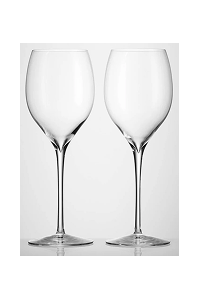
A narrow wine glass captures the delicate aromas and keeps the wine cool.
Description for tables: A narrow wine glass captures the delicate aromas and keeps the wine cool.
-
2. Brunello Cucinelli - wine chiller bucket
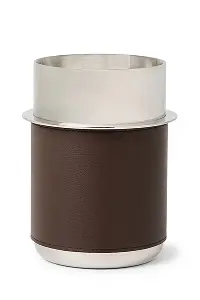
Keep your Sauvignon Blanc perfectly chilled throughout your meal, especially on warmer days.
Description for tables: Keep your Sauvignon Blanc perfectly chilled throughout your meal, especially on warmer days.
-
3. Wine Thermometer
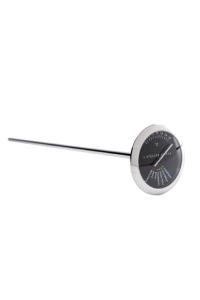
Monitor the temperature to avoid over-chilling or over-warming.
Description for tables: Monitor the temperature to avoid over-chilling or over-warming.
-
4. Coravin® Timeless Model Six+ Wine Preservation System

Use this to keep your Albariño fresh after opening and remove excess air.
Description for tables: Use this to keep your Albariño fresh after opening and remove excess air.
-
5. Peugeot - Doppia corkscrew
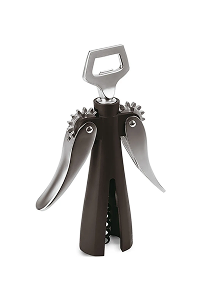
A reliable corkscrew will help you open your bottles effortlessly and with elegance!
Description for tables: A reliable corkscrew will help you open your bottles effortlessly and with elegance!
FAQs Best Albariño wine bottles
Wines similar to Albariño include white wines like Portugal’s Alvarinho, Sauvignon Blanc, the Spanish Verdejo, Chardonnay, and Riesling, which are vibrant, dry white wines bursting with citrus and stone fruit flavors. As Albariñ they’re light-bodied and can be paired well with seafood or taken as an aperitif.
Check out our top 10 Albariño wines, updated monthly to find the Idilico wines Albariño 2023 vintage and the best online shops where to buy it. This particular vintage was fermented in stainless steel and aged with lees for four months, resulting in a refreshing citrusy and tropical fruit taste. It is brightly acidic and goes down smoothly in the mouth, an excellent pairing with fresh cheese or seafood.
Reviews of the 2018 Field Theory Albariño white wine describe it as a zesty and balanced wine with a dry, crisp profile. It has a lingering saline finish and tasting notes of pear, honeydew, and grapefruit. Some people have found it to be a bit earthier than typical Albariño, but this complements its overall elegance!
The Albariño wine grape is a green, tiny and thick skinned berry that thrives in cool and rainy climates. Native to the Iberian Peninsula, the characteristics of the Albariño wine it gives include aromatic intensity, citrusy flavors, and high acidity. They can also be slightly bitter due to their high phenols.
The Albariño wine price of a good quality bottle can range from $15 to $100, depending on producers, winemaking techniques and terroir. Wines from good vintage years with unique taste profiles are also highly sought-after, and they tend to fetch higher prices. For recommendations on top rated Albariño wines and where to buy them, check out our Albariño wine review.
Albariño grapes are native to the Iberian Peninsula, growing along the coastlines of Northwestern Spain and Northwestern Portugal. Understanding where Albariño wine is from will help you to pair it with the right foods, as its high salinity and minerality are the perfect palate cleansers for seafood and soft cheeses.
Albariño grapes grown in the Rías Baixas wine region in Spain and Portugal’s Vinho Verde are typically trellised overhead with Pergolas or trained with wires to keep them dry. They grow in cooler climates, are tiny and thick-skinned yet quite sensitive to rot. Therefore, it is important to keep their roots dry at all times.
The Spanish white wine Albariño is best served slightly chilled in a narrow, white wine glass. Go for fresh, young Albariños to enjoy the vibrant acidity and crispness or a more mature vintage if you would like some complexity. Savor it with some fresh shellfish or light meat for the best tasting experience.
The best Albariño food pairing is anything from the sea. However, it is not limited to seafood alone, as it is versatile enough to pair well with a wide variety of food textures. You can enjoy your Albariño with white fish, oysters, fish tacos, Gouda cheese, Manchego Cheese, Burrata or fresh green herbs like salsa verde.
Alvarinho vs Albariño is quite easy to differentiate, as they are both different names that represent the same grape type. “Alvarinho” is what the Portuguese call the tiny, pale golden-lemon, thick-skinned berries that make up a part of the Vinho Verde wines. As for “Albariño”, it is the Spanish name for the same grape.
Yes, history has it that Albariño wine originated from Spain, specifically in the Galicia region. In Galicia, there are about 5 core communes where Albariño is produced in Rías Baixas. From Val do Salnés to the newer Ribeira do Ulla, these regions are renowned for their intensely mineral and fruity wines.
Albariño is a dry wine, with a residual sugar content of approximately 1.4g/l. To better understand if Albariño wine is dry or sweet, let us consider the grapes. Thick-skinned and tiny with a high phenol content, they are highly acidic with refreshing citrus flavors. There may be some subtle sweetness from the fruit tasting notes but they are generally bitter.
Albariño wine pairing with cheese is an excellent combination due to the freshness and brightness of the wines. Its high acidity pairs well with the texture of soft cheeses like Mozzarella, Burrata or semi-hard cheeses like Manchego and salty Feta.
Albariño is grown in Portugal in the Viñho Verde wine-producing region. Albarino gotten from here is usually flavored with various fruits, and has some spritz to go with it. There are nine sub-communes in the Vinho Verde Denominazione di Origine Controllata (DOC), but the only region where Alvarinho is bottled as a single varietal wine is Monção e Melgaço.


